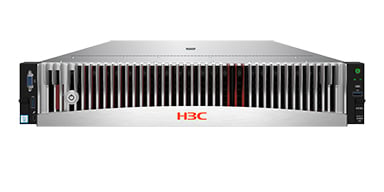- Table of Contents
-
- H3C Access Points Comware 7 Configuration Examples-6W100
- 00-Preface
- 01-H3C Access Points Comware 7 WPA2-PSK Encryption Configuration Examples
- 02-H3C Access Points Comware 7 Client Rate Limiting Configuration Examples
- 03-H3C Access Points Comware 7 NAT Configuration Examples
- 04-H3C Access Points Comware 7 PPPoE Configuration Examples
- 05-H3C Access Points Comware 7 Mesh WDS Configuration Examples
- 06-H3C Access Points Comware 7 Local MAC Authentication (IPv6) Configuration Examples
- 07-H3C Access Points Comware 7 IPv6 Configuration Examples
- 08-H3C Access Points Comware 7 Remote 802.1X Authentication (IPv6) Configuration Examples
- 09-H3C Access Points Comware 7 Layer 2 IPv6 Multicast Configuration Examples
- 10-H3C Access Points Comware 7 Layer 3 IPv6 Multicast Configuration Examples
- Related Documents
-
| Title | Size | Download |
|---|---|---|
| 10-H3C Access Points Comware 7 Layer 3 IPv6 Multicast Configuration Examples | 101.27 KB |
|
H3C Access Points |
|
Comware 7 Layer 3 IPv6 Multicast |
|
Configuration Examples |
Document version: 6W100-20201125
Copyright © 2020 New H3C Technologies Co., Ltd. All rights reserved.
No part of this manual may be reproduced or transmitted in any form or by any means without prior written consent of New H3C Technologies Co., Ltd.
Except for the trademarks of New H3C Technologies Co., Ltd., any trademarks that may be mentioned in this document are the property of their respective owners.
The information in this document is subject to change without notice.
Introduction
The following information provides an example for configuring Layer 3 IPv6 multicast.
Prerequisites
This document applies to Comware 7-based access points. Procedures and information in the examples might be slightly different depending on the software or hardware version of the access points.
The configuration examples in this document were created and verified in a lab environment, and all the devices were started with the factory default configuration. When you are working on a live network, make sure you understand the potential impact of every command on your network.
This document assumes that you have basic knowledge of Layer 3 multicast.
Example: Configuring Layer 3 IPv6 multicast
Network configuration
As shown in Figure 1:
· OSPFv3 and IPv6 PIM-DM run on the network.
· VOD streams are multicast to receiver hosts. Receiver hosts of different organizations form stub networks N1 and N2. Host A and Host C are multicast receiver hosts in N1 and N2, respectively.
· MLDv1 runs between Router A and N1, and also between Router B and N2.
· Router A acts as the MLD querier in N1. Router B acts as the MLD querier in N2 because it has a lower IPv6 address.
Configure the routers and the fat APs to meet the following requirements:
· The hosts in N1 can join only IPv6 multicast group FF1E::101.
· The hosts in N2 can join any IPv6 multicast groups.
Analysis
To implement Layer 3 IPv6 multicast, enable MLD globally and in the VLAN to which the hosts belong.
Restrictions and guidelines
Make sure the devices on the network can reach each other.
Procedures
Configuring Router A
# Enable IPv6 multicast routing.
<RouterA> system-view
[RouterA] ipv6 multicast routing
[RouterA-mrib6] quit
# Enable MLD on GigabitEthernet 1/0/1.
[RouterA] interface gigabitethernet 1/0/1
[RouterA-GigabitEthernet1/0/1] mld enable
[RouterA-GigabitEthernet1/0/1] quit
# Enable IPv6 PIM-DM on GigabitEthernet 1/0/2.
[RouterA] interface gigabitethernet 1/0/2
[RouterA-GigabitEthernet1/0/2] ipv6 pim dm
[RouterA-GigabitEthernet1/0/2] quit
# Configure an IPv6 multicast group policy on Router A so that the hosts connected to GigabitEthernet 1/0/2 can join only IPv6 multicast group FF1E::101.
[RouterA] acl ipv6 basic 2001
[RouterA-acl-ipv6-basic-2001] rule permit source ff1e::101 128
[RouterA-acl-ipv6-basic-2001] quit
[RouterA] interface gigabitethernet 1/0/2
[RouterA-GigabitEthernet1/0/2] mld group-policy 2001
[RouterA-GigabitEthernet1/0/2] quit
Configuring Router B
# Enable IPv6 multicast routing.
<RouterB> system-view
[RouterB] ipv6 multicast routing
[RouterB-mrib6] quit
# Enable MLD on GigabitEthernet 1/0/1.
[RouterB] interface gigabitethernet 1/0/1
[RouterB-GigabitEthernet1/0/1] mld enable
[RouterB-GigabitEthernet1/0/1] quit
# Enable IPv6 PIM-DM on GigabitEthernet 1/0/2.
[RouterB] interface gigabitethernet 1/0/2
[RouterB-GigabitEthernet1/0/2] ipv6 pim dm
[RouterB-GigabitEthernet1/0/2] quit
Configuring fat AP 1
1. Configure wireless services:
# Create VLAN 100.
<AP1> system-view
[AP1] Vlan 100
[AP1-vlan100] quit
# Create service template service1 and enter its view.
[AP1] wlan service-template 1
# Configure the SSID as service1.
[AP1-wlan-st-1] ssid service1
# Specify VLAN 100 for clients to access the WLAN defined by the service template.
[AP1-wlan-st-1] vlan 100
# Enable the service template.
[AP1-wlan-st-1] service-template enable
[AP1-wlan-st-1] quit
# Bind the service template to interface WLAN-Radio 1/0/1.
[AP1] interface WLAN-Radio 1/0/1
[AP1-WLAN-Radio1/0/1] service-template 1
[AP1-WLAN-Radio1/0/1] quit
2. Configure MLD:
# Enable MLD globally.
[AP1] mld
[AP1-mld] quit
# Enable MLD on VLAN 100.
[AP1] vlan 100
[AP1-vlan100] mld enable
[AP1-vlan100] quit
3. Configure GigabitEthernet 1/0/1 on the AP as a trunk port, and assign the port to VLAN 100.
[AP1] interface GigabitEthernet 1/0/1
[AP1-GigabitEthernet1/0/1] port link-type trunk
[AP1-GigabitEthernet1/0/1] port trunk permit vlan 100
[AP1-GigabitEthernet1/0/1] quit
Configuring fat AP 2
1. Configure wireless services:
# Create VLAN 100.
<AP2> system-view
[AP2] Vlan 100
[AP2-vlan100] quit
# Create service template service2 and enter its view.
[AP2] wlan service-template 2
# Configure the SSID as service2.
[AP2-wlan-st-1] ssid service2
# Specify VLAN 100 for clients to access the WLAN defined by the service template.
[AP2-wlan-st-1] vlan 100
# Enable the service template.
[AP2-wlan-st-1] service-template enable
[AP2-wlan-st-1] quit
# Bind the service template to interface WLAN-Radio 1/0/1.
[AP2] interface WLAN-Radio 1/0/1
[AP2-WLAN-Radio1/0/1] service-template 2
[AP2-WLAN-Radio1/0/1] quit
2. Configure MLD:
# Enable MLD globally.
[AP] mld
[AP2-mld] quit
# Enable MLD on VLAN 100.
[AP2] vlan 100
[AP2-vlan100] mld enable
[AP2-vlan100] quit
3. Configure GigabitEthernet 1/0/1 on the AP as a trunk port, and assign the port to VLAN 100.
[AP2] interface GigabitEthernet 1/0/1
[AP2-GigabitEthernet1/0/1] port link-type trunk
[AP2-GigabitEthernet1/0/1] port trunk permit vlan 100
[AP2-GigabitEthernet1/0/1] quit
Verifying the configuration
# Display MLD information for VLAN-interface 200 on fat AP 2.
[AP2] display mld interface
(FE80::200:5EFF:FE66:5100):
MLD is enabled.
MLD version: 1
Query interval for MLD: 125s
Other querier present time for MLD: 255s
Maximum query response time for MLD: 10s
Querier for MLD: FE80::200:5EFF:FE66:5100 (this router)
MLD groups reported in total: 1
Configuration files
· Router A:
#
ipv6 multicast routing
#
interface gigabitethernet 1/0/1
mld enable
#
interface gigabitethernet 1/0/2
ipv6 pim dm
#
acl ipv6 basic 2001
rule permit source ff1e::101 128
#
interface
mld group-policy 2001
#
· Router B:
#
ipv6 multicast routing
#
interface gigabitethernet 1/0/1
mld enable
#
interface gigabitethernet 1/0/2
ipv6 pim dm
#
· Fat AP 1:
#
vlan 100
#
wlan service-template 1
ssid service1
vlan 100
service-template enable
#
interface WLAN-Radio 1/0/1
service-template 1
#
mld
#
vlan 100
mld enable
#
interface GigabitEthernet 1/0/1
port link-type trunk
port trunk permit vlan 100
#
· Fat AP 2:
#
vlan 100
#
wlan service-template 2
ssid service2
vlan 100
service-template enable
#
interface WLAN-Radio 1/0/1
service-template 2
#
mld
#
vlan 100
mld enable
#
interface GigabitEthernet 1/0/1
port link-type trunk
port trunk permit vlan 100
#
Related documentation
· IP Multicast Command Reference in H3C Access Points Command References
· IP Multicast Configuration Guide in H3C Access Points Configuration Guides
· WLAN Command Reference in H3C Access Points Command References
· WLAN Configuration Guide in H3C Access Points Configuration Guides






